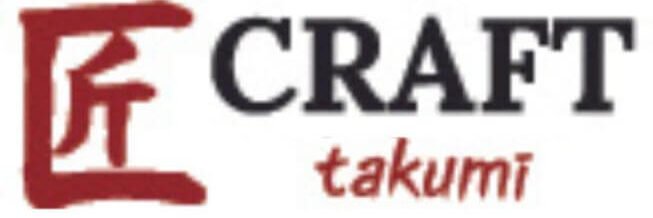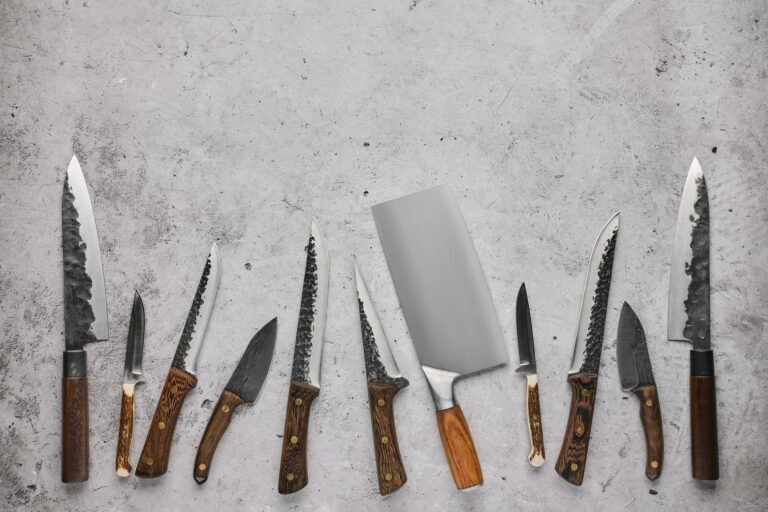A kitchen knife is an essential tool in any kitchen. How many do you own, and are you satisfied with them?
In the market, there are many types of knives, each designed for a specific purpose. The most popular include Chef’s knives (Gyuto), All-purpose knives (Santoku), Japanese Deba knives, Sashimi (Sushi) knives, Petty knives, and Bread knives, among others. The material of the knife is also crucial. Stainless steel is the most commonly used material, valued for its rust resistance, though its price can vary widely depending on factors such as the grade of stainless steel, the manufacturing process, and the handle material.
There are also carbon steel knives, which, while prone to rusting, offer exceptional sharpness, and Damascus knives, known for their beautiful layered patterns. With so many options available, the market offers a wide range of knives to choose from.
Whether you are satisfied with your current knives or are curious about other options, have you ever wondered about the different types of knives out there?
In this article, we’ll introduce various types of kitchen knives.
Types of Kitchen Knives

Western-style knives are versatile and easy to use, with double-edged blades that excel at making straight cuts, making them ideal for slicing meat and vegetables. They are commonly used in households and among chefs in New Zealand, and there are various types to choose from.
Here are some common types of kitchen knives along with their key features.
Chef’s Knife (Gyuto)
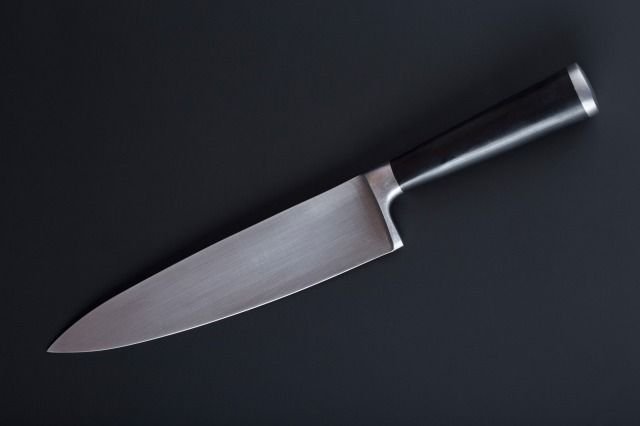
A Chef’s knife is a versatile double-edged knife. The knife is not only ideal for cutting meat but also excellent for slicing vegetables, fish, and more. With its pointed tip, it is particularly suited for tasks like portioning meat on a cutting board. This knife is one of the most popular choices in New Zealand.
The knife is also commonly referred to as a “Gyuto.” In Japan, during a time when there was no custom of eating beef (gyu niku in Japanese) Western-style knives used for butchering cattle were introduced to the country. These knives came to be known as “Gyuto knives”.
View our range of Chef’s knives.
All-Purpose Knife (Santoku)

An All-purpose Purpose knife is a versatile double-edged knife that combines elements of both Western and Japanese knife styles. Similar to a Chef’s knife, it excels at cutting meat, fish, vegetables, and more, making it a highly practical tool in the kitchen.
The knife is also called “Santoku” which means “three virtues” or “three uses,” referring to its ability to handle meat, fish, and vegetables. Typically, the All-purpose knife has a blade length of 165-180mm, and its rounded tip makes slicing vegetables easier than the more pointed Chef’s knife. The Santoku is one of the most popular household knives in Japan.
View our range of All-Purpose knives..
Petty Knife
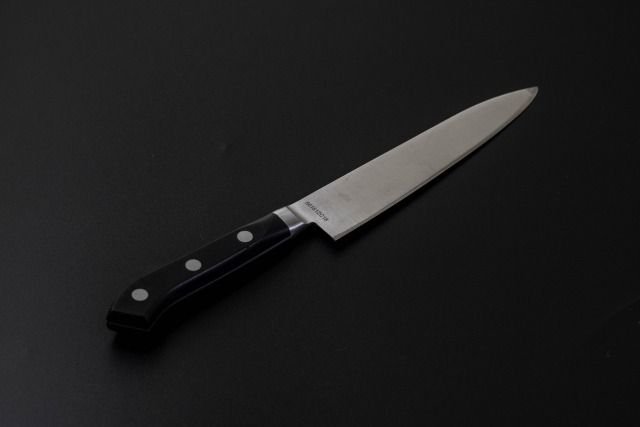
A Petty knife is a small, versatile, double-edged knife, typically used for detailed tasks like peeling, trimming, and cutting fruits, vegetables, and other ingredients, making it an excellent supplementary knife in the kitchen.
View our petty knife.
Paring knife
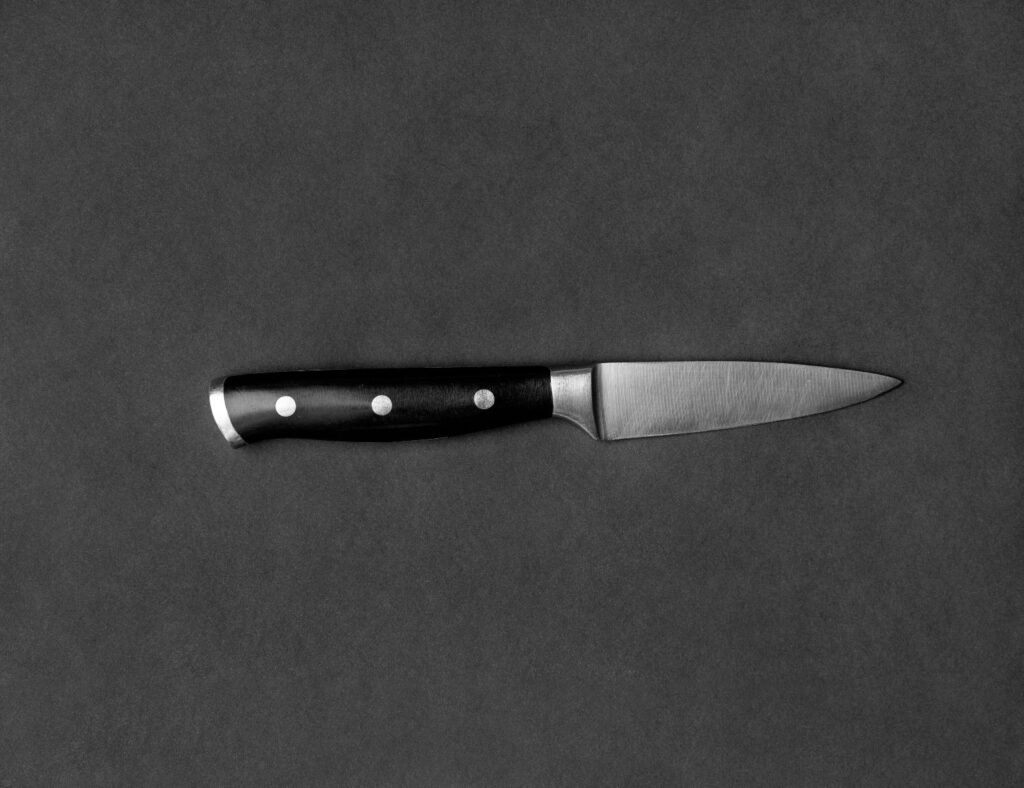
A Paring knife is a small knife with a short blade, typically 7.5 to 10 cm long, and a pointed tip. It is ideal for precise, detailed tasks, such as peeling, coring, trimming, and other intricate cutting jobs that require precision.
Cleaver knife
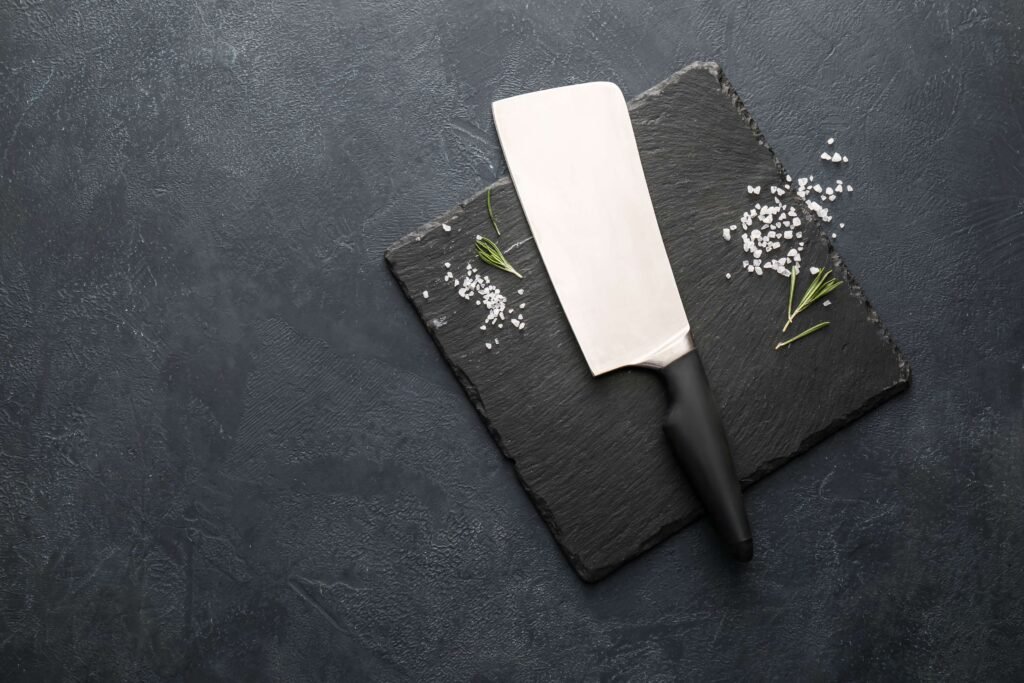
A Cleaver knife is a large, thick-bladed knife designed for cutting through bone-in meat and tough ingredients.
Bread knife
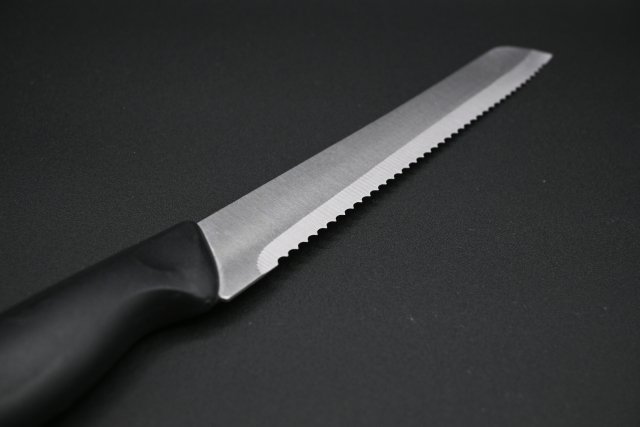
There are two types of bread knives: the serrated type and the straight straight-edgedge type. The serrated type features a jagged blade, making it ideal for cutting any type of bread, from soft to hard, without crushing it. The straight edge type, with its straight blade, is better suited for cutting soft bread or delicate items like sponge cakes, where a gentler touch is needed to avoid crushing.
Exploring Traditional Japanese Knives
Japanese knives (wa-bochou) are traditional knives from Japan, most of which are single-beveled (with the edge on only one side). This design provides an exceptionally sharp edge and allows for precise cutting, ensuring that the fibres of the ingredients are not damaged, making them ideal for the delicate cutting required in Japanese cuisine.
Sashimi (Yanagiba) knife

A Sashimi knife is characterised by its long, slender blade and is typically single-beveled, making it ideal for slicing fish to create beautifully sliced sashimi (raw fish slices). The single bevel provides an exceptionally sharp edge, allowing for smooth cuts without crushing the fish, resulting in clean and vibrant slices.
View our Sashimi knife.
Vegetable (Nakiri) knife

A vegetable knife (Nakiri) is a double-edged knife that is ideal for making straight cuts through vegetables. It is used for tasks such as trimming the edges, chopping, and finely slicing vegetables.
View our Vegetable knife (Nakiri).
Deba knife
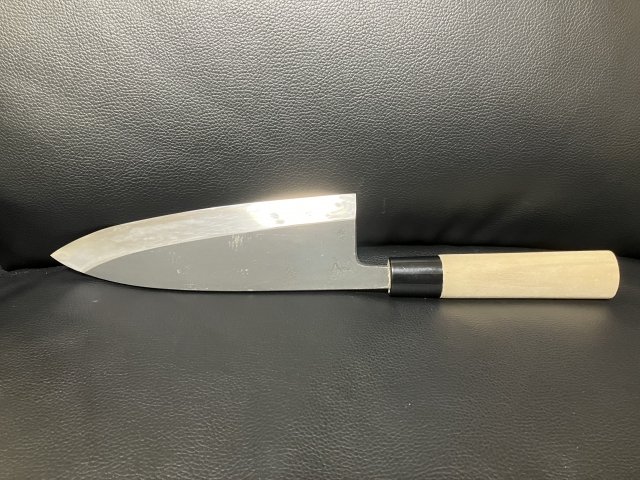
A Deba knife is a single-beveled knife used for filleting and butchering fish. It is a uniquely Japanese knife, developed in a culture that has long included fish in its diet. The back of the blade is thickened to help cut through the hard bones of fish.
Elevate Your Cooking with Proper Knife Selection

By using different types of knives suited to various ingredients, I believe you can enhance both the results and enjoyment of your cooking.
If you’re unsure about which knife to choose, a Chef knife (Gyuto) or All-Purpose (Santoku) knife can cover a wide range of ingredients, such as meat, vegetables, and fish.
Each knife is designed with a specific shape, length, and edge suited to particular tasks. Understanding the characteristics of knives and choosing the right one is key. In addition to your essential knife, using different knives for different ingredients can elevate your cooking and make the time spent in the kitchen more enjoyable. Be sure to find the knife that best suits your needs.
